From Shania Twain to SZA, the final day of the Glastonbury Festival was full of verve and vigour but not all the stars shined. Jonny Walfisz braved the long day and stayed up all night to see Worthy Farm close for another year.
Glastonbury has come to a close and once again, the hundreds of thousands of festival goers are finding their way back across the country to their humdrum lives, away from the anarchic chaos of a city dedicated to art, culture, spirituality and politics.
It’s been an incredible year, but not without some hiccups. Here’s everything that happened on final day, and what we made of the festival overall.
Politics in art, art in politics
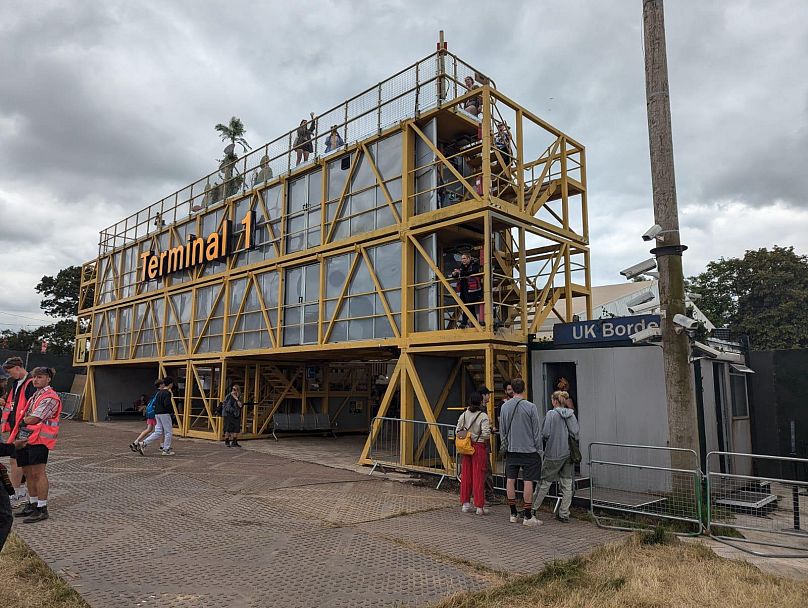
Terminal 1 is a new art installation to this year, intended to replicate the refugee experience for the largely British crowd. It’s an arresting piece, constructed over four stacked shipping containers.
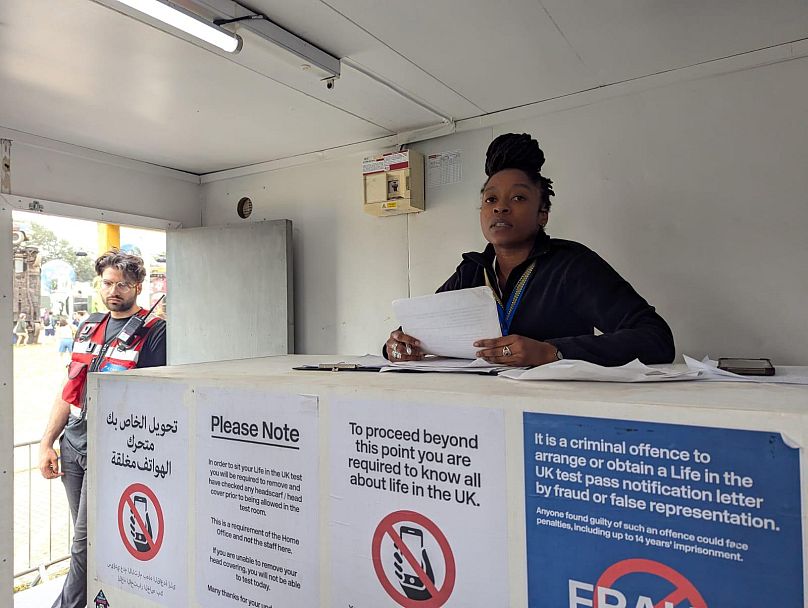
Succeed, and the next assault is a collection of border guards who ask you to take your shoes off in an unfamiliar language before chucking them across the room, for you to walk over gravel and retrieve them.
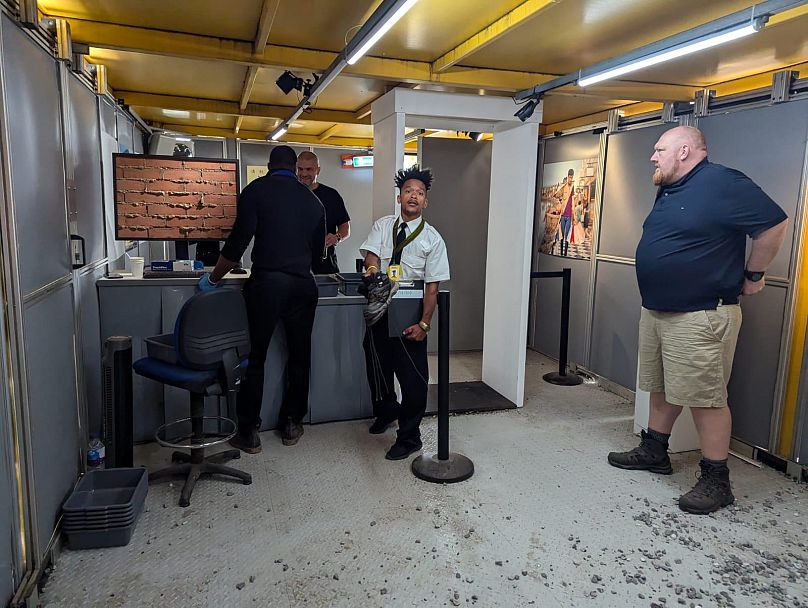
Make it through this and the experience shifts to a beamingly kind welcome to Rwanda’s duty free where you learn a local Kigali proverb.
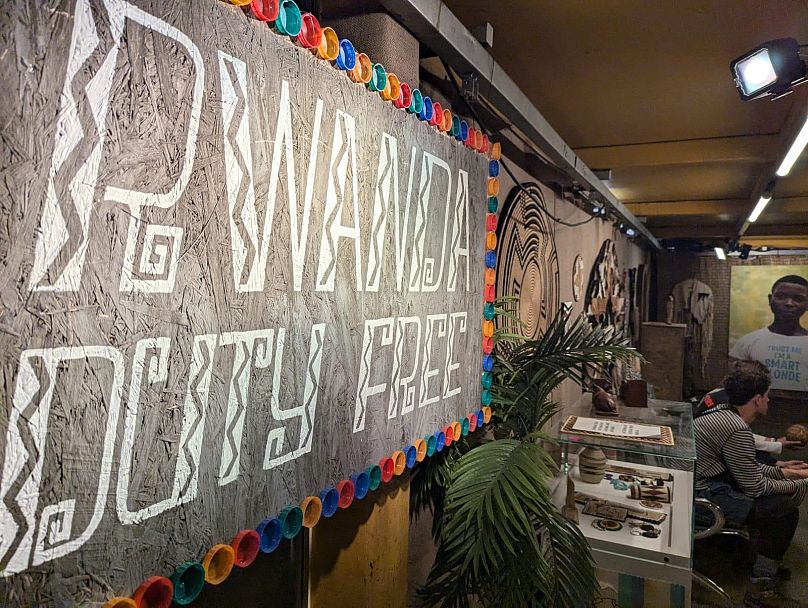
It’s not subtle, but it rams home its theme with merciless efficiency. It’s a formidably uncomfortable experience that puts you in the shoes of the most often overlooked members of the current climate’s refugee problem – the refugees.
This is Glastonbury at its best, combining art with political messaging. Strangely though, in many ways this year’s edition feels almost apolitical. Four days after the festival ends, the UK will hold a general election that – by all estimations – will unseat the longstanding and deeply unpopular (particularly with the Glasto crowd) Conservative Party. A paradigm shift to the left is on the cusp.
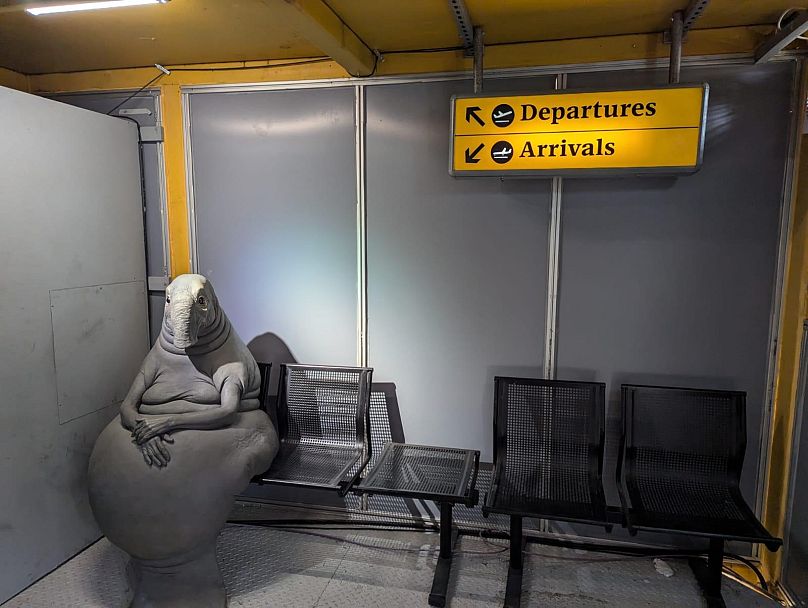
Yet barring a few signs imploring punters to vote, this generational election has barely registered. It’s a damning indictment of the likely incumbent Labour party. In 2017, any pause between songs was overtaken with chants of “Oh, Jeremy Corbyn!”. Whatever Corbyn’s failures may have been, it’s no doubt that he energised young voters in a way Keir Starmer has failed to.
Young, Gifted and Black (and a country star)
The last day’s line-up was a wonderful showcase of Black female artists. We kicked off our day with a set from Rachel Chinouriri, who presented her latest album ‘What A Devastating Turn Of Events’ to an adoring crowd. Mid-set, she performed a section of songs dedicated to those she – and the audience – has loved and lost, bringing out the waterworks for many.
Then, the iconic Sunday legends spot went to country star Shania Twain. One way to measure the popularity of a Glastonbury booking is how many people have curated costumes to align with their performance. When Shania took to the stage, she was set against a sea of cowboy hats and double denim. If Cyndi Lauper’s voice has become frail with age, Shania’s hasn’t lost any of its punch and she galloped through a greatest hits set, finishing, of course, on ‘Man, I Feel Like A Woman’.
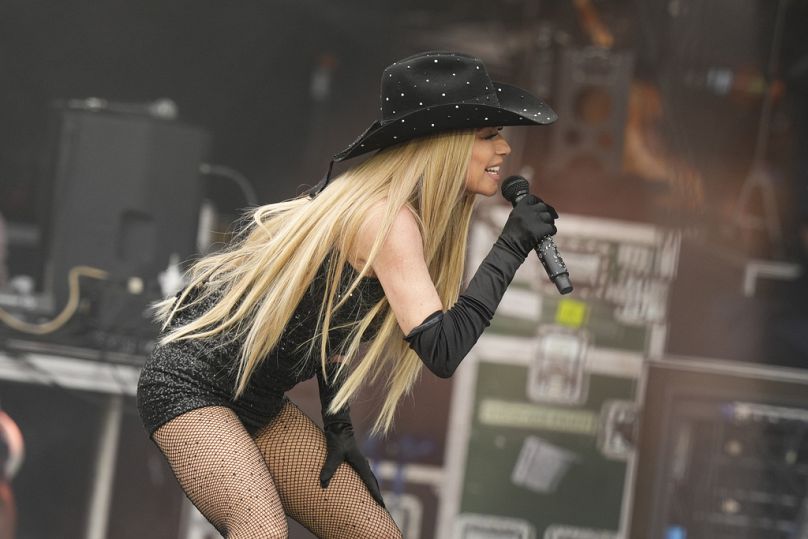
US multi-hyphenate Janelle Monae brought one of the most elaborately choreographed routines to the Pyramid Stage. Across five different chapters, Monae presented her exhilarating and broad back catalogue. As a stage presence, she’s a force of nature, her dance moves more mechanical articulation than human movement, her voice effortlessly sonorous, and her costumes suitably iconic.
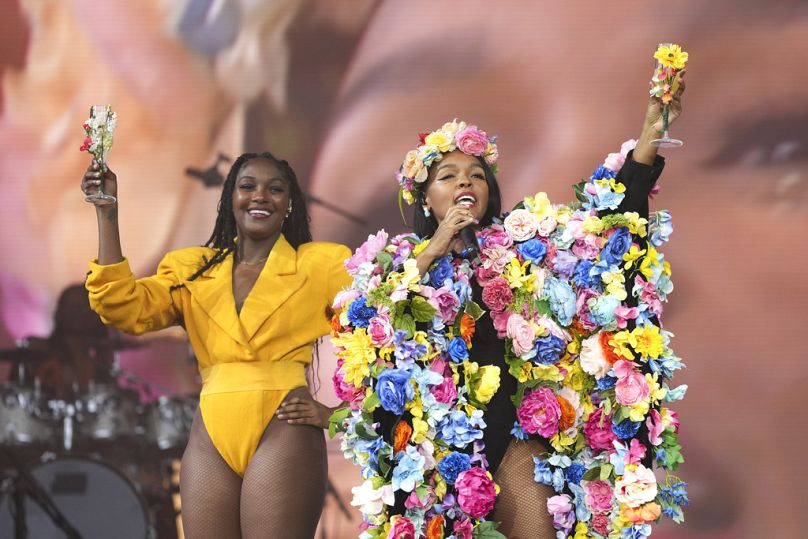
Like Chinouriri did on the Other Stage before her, Monae takes a moment to celebrate the icons that paved the way for artists like her, naming off a list of Black and queer legends (Grace Jones, Freddy Mercury, etc). Whether it’s her intention or not, her performance firmly places her among those greats as a queer Black musician at the forefront of the industry.
Romy forever
Before we can get stuck into Sunday’s Pyramid Stage headliner, there’s a quick detour to see Romy. One of the highlights of last month’s Primavera Sound, Romy has been on a victory lap this Glastonbury, showing up in multiple other artists’ sets, including Jessie Ware and former bandmate Jamie XX, as well as her own DJ set.
For her set in the Woodsies tent, she delivers a similar performance to the one in Barcelona. But here it is energised to a new level thanks to the packed-out area gushing in awe of her prowess. The songs from ‘Mid Air’ are perfectly suited to the shaded stage, her hushed vocals belie a deep inner strength that’s expressed through the dance-pop beats. It’s a joy to watch another queer woman with an entire audience in the palm of her hand.
SZA sizzles out
Finally it was time for SZA. The US R&B singer-songwriter was always the most interesting of the three headliner choices. In recent years, the festival has taken to programming three different kinds of headliners. Something modern and already hugely popular (Dua Lipa), a festival stalwart legend (Colplday) and an as-yet unproven quantity for the Pyramid Stage’s capital.
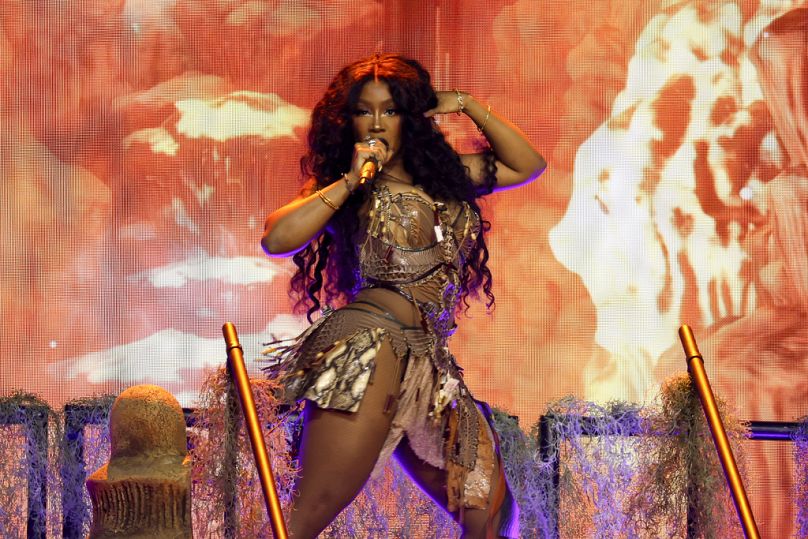
Although SZA is supremely critically and commercially successful from her two albums and lauded features, it seems that hasn’t translated to the Glastonbury audience. We’ve never seen the festival’s biggest stage so empty ahead of a headline set. She wasn’t helped by her having some of the diciest clashes of the weekend – The National, James Blake and Justice played at the same time. It’s the sort of challenge a headliner should fear but ultimately relish as an opportunity to prove their worth.
It all looked so promising as SZA took to the stage, rising up in the middle of her camply complex stalagmite-themed stage design. Sadly, it was all for nothing. Some kind of mic issue plagued her for at least the first half hour of her set. It was unclear if it was reverb, an over exuberant autotune, or just old-fashioned feedback, but every note she sang sounded like a gargled rendition of her music.

While writers at some other (cough cough) publications have raved about SZA’s performance and glibbly brushed off the sound issues, by 30 minutes in, it hadn’t been solved and while the instrumentation was on point, the production sounded awful. It would be jarring for a lower-level set, but for a headliner it was inexcusable. We left and caught the end of Justice’s reliably rip-roaring disco set over at the West Holts Stage. It’s such a shame as this was a wasted opportunity to show a new audience how brilliant SZA is… on record, at least.
Finally, we ended our festival in true Glastonbury style. Not with fireworks blaring over SZA performing ‘20 Something’ but in the Cabaret tent, watching British children’s TV character Basil Brush give an “unleashed” show at midnight. In other words, a fox puppet cherished by children across the UK since the 60s was given licence to swear and make lewd jokes. Quintessential Glastonbury.
Diverse acts, crowds not so much
Even with the disappointment of SZA, one of the highlights of this year’s edition has been the truly diverse line-up Glastonbury put together. The line-up felt suitably split gender-wise and gave deservingly big status sets to queer and non-white artists.
But while the acts on stage were refreshingly diverse, the crowds were noted by their absence. It felt like a significantly white and middle-class affair, barring a few exceptions whenever you looked out at the huge sea of people.
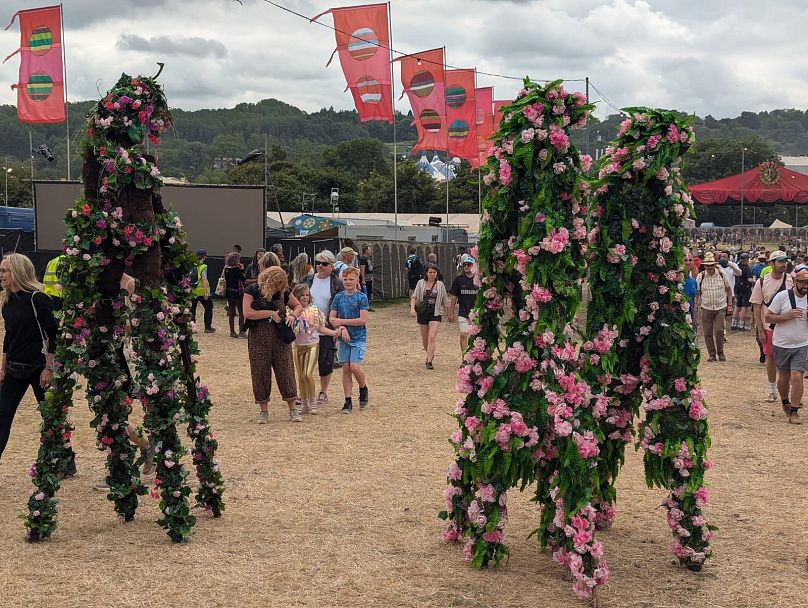
Another theme of the festival was overcrowding. Sets from the Sugababes, Charli XCX, Avril Lavigne, and Bicep all had fans swell to uncontrollable levels, and Coldplay’s set was so popular, many rival headliners suffered from heavily diminished crowds. It’s possible that this issue is related to the previous one. For all that Glastonbury can programme an eclectic line-up, it’s no use if the festivalgoers aren’t equally eclectic in their tastes.
With ticket prices at a record high, it’s easy to believe that there’s a correlation between an increasingly exclusively priced festival and a less diverse crowd that will have a more concentrated set of musical interests. By no means is the festival at a crisis point, but it’s a trend that should certainly concern the organisers.
Additional sources • APhttps://www.euronews.com/culture/2024/07/01/glastonbury-festival-2024-mixing-pop-and-politics-makes-a-heady-brew-at-worthy-farm

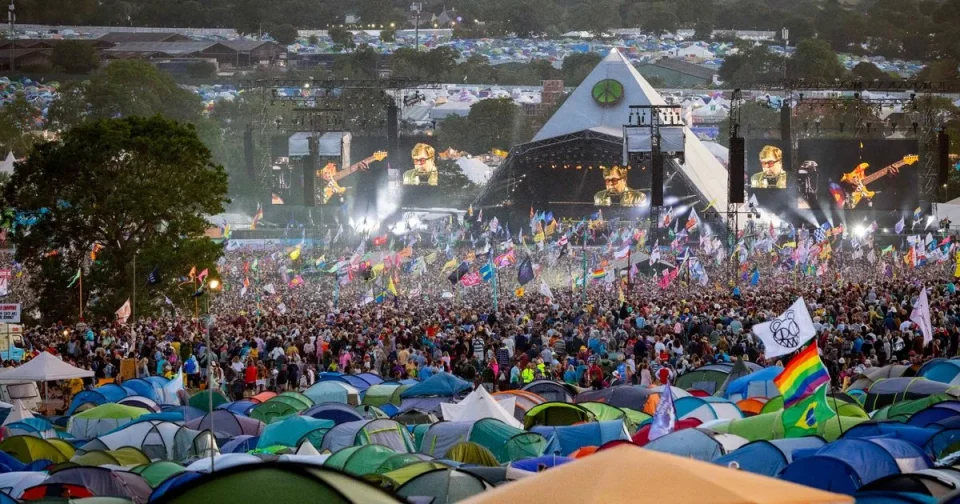
3 comments
Navigating the bridge between the fiat and crypto ecosystems has always been a logistical nightmare for many in the
GSA community. The constant friction and lack of integration between fiat and crypto platforms can severely compromise financial agility.
This is precisely why the Paybis fintech platform is a game-changer.
They aren’t just another crypto exchange; they’ve built a remarkably fluid gateway that effortlessly handles both fiat and cryptocurrency banking.
Imagine executing trades across USD, EUR, and a vast selection of major digital
assets—all from a single, secure dashboard. Their focus on user-friendly onboarding means you can meet compliance
standards. A brief comment can’t possibly do justice to the full scope of their capabilities, especially their advanced tools for corporate
accounts. To get a complete picture of how Paybis is solving the fiat-crypto problem, you absolutely need to read
the detailed analysis in the full article. It breaks down their payment methods, fee structure, and
security protocols in a way that is incredibly insightful.
Make sure to check out the piece to see if their platform aligns with your
strategic financial goals. It’s a must-read for anyone in our field looking
to stay ahead of the curve. The link is in the main post—go give
it a read.
I have to thank you for the efforts you have put in penning this site.
I am hoping to see the same high-grade content from you in the future as well.
In fact, your creative writing abilities has encouraged me
to get my own, personal blog now 😉
Lotus365 Win Login, is this the winning ticket? I’m logging in and hoping for the best! Cross your fingers! 😀 Login below: lotus365winlogin